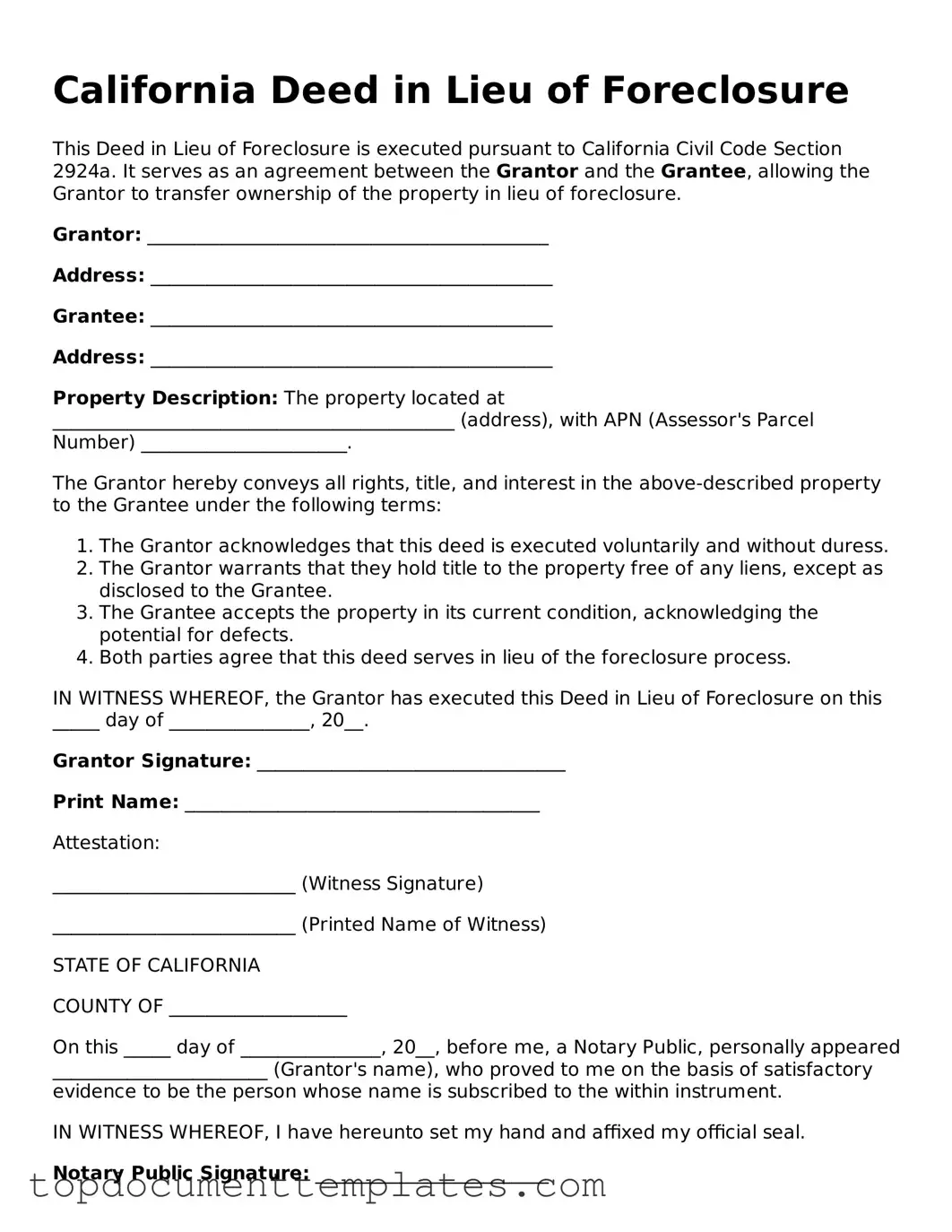Valid Deed in Lieu of Foreclosure Form for California State
A California Deed in Lieu of Foreclosure is a legal document that allows a homeowner to voluntarily transfer their property to the lender to avoid foreclosure. This option can provide a smoother resolution for both parties, helping the homeowner escape the burden of mortgage debt while allowing the lender to reclaim the property. If you're considering this option, fill out the form by clicking the button below.
Open This Form
